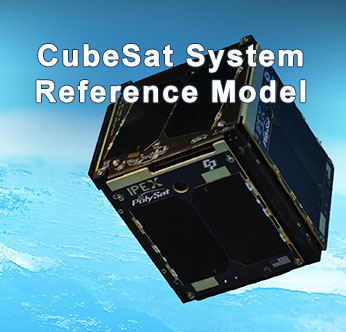Standardize development of CubeSats with SysML-based Reference Model

CubeSats originated in 1999 in the university community as a means to enable the design, construction, and launch of satellites using primarily off-the-shelf components. Recently the worldwide community has adopted the CubeSat standard as a low-cost means of performing technology demonstration, scientific, commercial and government missions.
The dramatic decrease in cost for delivering small payloads to orbit has caused an explosion in the number of CubeSats and the number of organizations developing CubeSats. A SysML-compliant and tool-independent CubeSat template model that provides building blocks that can be specialized to support MBSE CubeSat design will lower the cost of development and increase the quality of CubeSat spacecraft and ground system design.
This RFP solicits proposals for the standardization of CubeSat development through the use of a SysML-based CubeSat Reference Model that enables the following:
- Decreased cost of development and increased quality of CubeSat spacecraft and ground system design utilizing proven design templates
- Traceability between model design elements, requirements and regulatory constraints at all architectural levels
- Logical Context for the design and building of a specific CubeSat
- Improved communications across all stakeholders though fit for purpose diagrams and textual views
- Foundation for validation and verification of CubeSat design
- Foundation for continuous evaluation of CubeSat design
- Facilitate training for both MBSE and the CubeSat domain
- Foundation and context for future integration with other external analysis tools
- Guidance and instruction for applying MBSE principles and methods consistently in a CubeSat domain
- Capture and management of institutional knowledge
Both start-up and mature satellite development organizations can benefit from leveraging an effective common model structure and framework to support increased production without jeopardizing successful deployment and operation. The framework should allow organizations to extend the knowledge base with component libraries from their own mission-unique subsystems and experience, enhancing internal reuse and transfer of institutional knowledge to successive programs. Many of these organizations are university programs that combine aerospace engineering instruction with fundamental research while developing, launching, and operating a spacecraft. With a planned turnover of most of the engineering staff within a short period of time, these educational and research organizations need a common engineering framework and knowledge base that stores the institutional knowledge acquired by previous space missions, so that incoming personnel can quickly contribute to the engineering tasks and mission success.
Read RFP LOI Template Task Force Talk to OMG